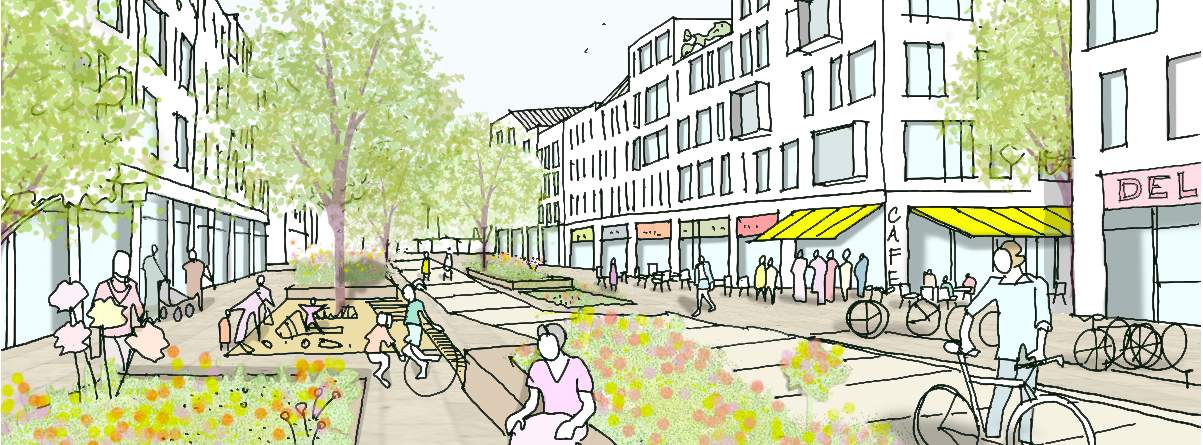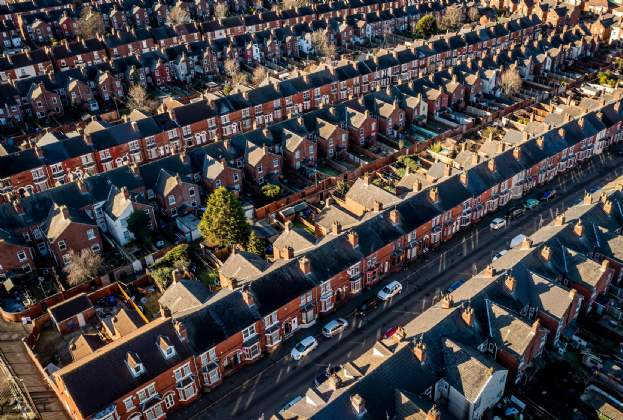At the end of July, the UK Secretary of State for Levelling Up, Housing and Communities, Michael Gove, announced a series of proposals to boost house building and meet previously announced policy targets. His speech was packed with punchy new guidelines and commitments, while realigning newer, stronger strategies to give old ones a better opportunity for execution on the ground. While there is little doubt that the delivery of more housing would be welcome, this development should encompass broader considerations. Here are some insights and opportunities we should be focusing on in the coming year:
1. THE '15 OR 20 MINUTE CITY'
The first part of the speech focused on good city making and not just housing. Connecting housing to health and community infrastructure, jobs, schools, retail and green spaces is essential for the wellbeing of citizens. The 15 and 20 minute city concepts are founded on the idea that within that timeframe everyone can walk to most of the facilities and services they need on a regular basis. Encouraging active travel, including cycling, has proven benefits for supporting social cohesion and individual health, and reducing the need for cars offers both personal financial and environmental benefits.
2. LOCATION AND CONNECTIVITY
One key proposal advocates house building on land currently occupied by warehouses. With the number of these structures that fall below the recent Minimum Energy Efficiency Standard (MEES) requirements, this would be a better use for these sites, but are they in the right location? Typically warehouses are located on sites designed to be serviced by large, heavy vehicles offering little or no connection beyond the site for either pedestrians or cyclists. The speech included confirmation that funds will be released for mass transit systems and such infrastructure, connecting communities within cities and also city to city, particularly in the North and Midlands. How these principles are translated into Local Plans and Transport Infrastructure Plans will be key to their success.
3. INCENTIVISING BROWNFIELD LAND DEVELOPMENTS
Gentle densification and the extension of individual homes, strategic infill and the redevelopment of small sites in urban areas, alongside bigger incentives for developers on brownfield, greater focus on Community Land Trusts and greater use of Permitted Development Rights (PDR) should be welcomed. However, local area characterisation studies and design review panels should form essential tools to guide these incentives for effective delivery, particularly regarding PDR development. Underused or vacant office and warehouse stock presents great challenges for adaptive reuse as the deep footprints do not lend themselves well to housing.
4. CREATION OF BEAUTIFUL PLACES
There is frequent mention of beauty throughout the speech, reflecting on recent ‘building beautiful’ policies. Defining beauty is important. Developments should be co-created with local communities, be contextually suitable and designed to be sustainable. This is fundamentally more important than focusing solely on beauty. Developers, designers and local authorities need to be more collaborative with all their stakeholders to define what makes a development both beautiful and resilient. This could be delivered through the ‘Office for Place’, a physical presence in the community which aims to coordinate engagement between professionals and community groups, or through a dedicated management team such as that at Poundbury.
5. GROWING CITIES
The focus on growth does not mention our flooding and estuarine landscapes in London. As many strategic pockets identified for development are affected by flood risk, innovative development models are required. Water sensitive urban design and floodable landscape concepts have been adapted in Britain but developing a more comprehensive understanding of how green-blue infrastructure, along with nature-based solutions, can help to support these urban growth areas and extensions is essential.
6. ABOLISHING OLD LEASEHOLD LAWS
Frequent reference is made to inner city quarters of London where most mansion blocks and buildings are still under single ownership. Abolishing this law and giving leaseholders their independence will be key in creating better management and maintenance of some of these valuable assets and preserving these historic settings. Strict rules on extensions and design parameters will be needed to maintain their original features and beauty.
We should be investing in policies which enable flexible masterplan frameworks and models for development – embracing market and social changes – to avoid future issues around change of use. How we build now will set the scene for future generations of change.
Further information
Contact Kat Martindale and Vinita Dhume

.jpg)
.jpg)
.jpg)
.jpg)
.jpg)
.jpg)

.jpg)
.jpg)
.jpg)